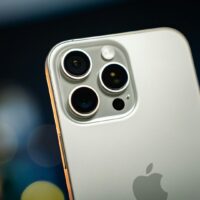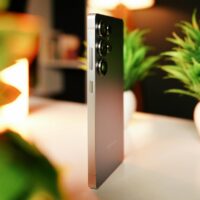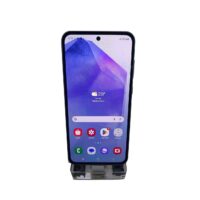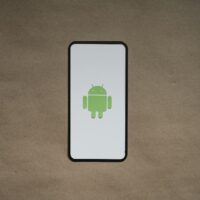The smartphone landscape is a relentless arena of innovation, where today’s flagship can quickly become tomorrow’s nostalgic memory. Yet, some devices leave an indelible mark, not merely for their specs sheet but for the philosophy they embody. The Google Pixel 3 XL stands as one such device—a product that, while no longer the newest, represented a significant milestone in Google’s hardware ambition. This review delves into the core components that defined the Pixel 3 XL experience: its acclaimed camera system, its practical battery life, and its polarizing display design. Understanding these elements provides a window into Google’s approach to smartphone design, an approach that prioritized computational photography and pure software experience over raw hardware extravagance.
Released in October 2018, the Pixel 3 XL arrived as Google’s unequivocal premium offering, designed to compete directly with the iPhone XS and Samsung’s Galaxy Note series. It was a device of contrasts, featuring some of the most advanced technology of its time alongside design choices that sparked widespread debate. The phone served as a powerful vessel for the latest version of Android, free from manufacturer skins and bloatware, offering a clean, fast, and intuitive user experience that was a significant draw for Android purists.
This analysis will move beyond the initial hype and critique to provide a factual, in-depth examination of the phone’s most critical aspects. We will dissect the camera’s capabilities, the real-world endurance of its battery, and the quality and implications of its display design. The goal is to present a comprehensive picture of what it was like to use the Pixel 3 XL as a daily driver, highlighting its strengths and acknowledging its compromises.
Display Design and Quality: The Notch Heard ‘Round the World
The most immediately recognizable feature of the Google Pixel 3 XL was its display, specifically the prominent notch at the top. At a time when the industry was experimenting with various methods to maximize screen-to-body ratio, Google’s implementation was one of the most pronounced. The notch housed dual front-facing cameras and a speaker, but its depth was a subject of significant criticism. Despite the controversy, the display itself was a high-quality panel that offered a compelling visual experience.
The Pixel 3 XL featured a 6.3-inch P-OLED display with a resolution of 1440 x 2960 pixels. This resulted in a sharp pixel density of approximately 523 pixels per inch (PPI), ensuring that text, images, and videos were rendered with exceptional clarity and detail. The screen supported an 18.5:9 aspect ratio, which was well-suited for modern media consumption and multitasking. The use of a P-OLED panel provided the benefits of perfect blacks, high contrast ratios, and vibrant colors, making it a pleasure for watching videos and viewing photos.
Google offered several display settings to tailor the visual experience to user preference. The default “Adaptive” mode delivered vibrant and saturated colors, while the “Natural” mode stuck to the sRGB color gamut for more accurate color reproduction. A “Boosted” mode offered a middle ground. The phone also featured a dedicated “Now Playing” feature that cleverly used the always-on display functionality to identify music in the background without draining the battery significantly.
The Notch and Real-World Usability
The deep notch was more than an aesthetic choice; it had practical implications. In day-to-day use, many applications quickly adapted to account for the notch, but some full-screen videos and games would letterbox the content, effectively hiding the notch and creating a symmetrical bezel at the top. Users had the option to “hide the notch” in the settings, which would black out the status bar areas on either side, creating a much thicker, uniform top bezel. This highlighted the fundamental compromise: a large, uninterrupted screen area required accepting the distinctive notch design.
The display’s performance in various lighting conditions was generally strong. It achieved a high peak brightness that made it usable outdoors in direct sunlight, though it could struggle in the very brightest conditions. The inclusion of HDR support meant that compatible content from platforms like YouTube and Netflix could be enjoyed with a wider dynamic range, bringing out more detail in shadows and highlights. The touch responsiveness was excellent, contributing to a fluid and seamless navigation experience.
- Panel Technology: The P-OLED display provided exceptional contrast with true blacks, as each pixel is individually lit. This technology also allowed for the effective always-on display feature, showing the time, date, and notifications with minimal power consumption.
- Resolution and Clarity: With a QHD+ resolution, the screen was undeniably sharp. This high density was particularly noticeable when reading small text, browsing detailed web pages, or using the phone in VR applications.
- Color Accuracy: The “Natural” color profile offered a high degree of accuracy, making the device suitable for photo editing and color-critical tasks. The other modes catered to users who preferred a more vibrant and punchy visual presentation.
- HDR Capabilities: The display’s HDR support enhanced the viewing experience for compatible videos, offering a wider color gamut and better contrast, making scenes appear more lifelike and immersive.
- Always-On Display: This feature was not only useful but also intelligent, with the “Now Playing” feature using on-device machine learning to identify songs without requiring a constant internet connection, showcasing Google’s software-hardware integration.
Camera System: Redefining Smartphone Photography with Computation
If the display was the Pixel 3 XL’s most controversial feature, its camera system was its crowning achievement. Google continued its strategy of using a single rear camera sensor, relying heavily on sophisticated software and computational photography to outperform competitors with multiple lenses. This approach proved wildly successful, and for a considerable time, the Pixel 3 XL was regarded as having the best smartphone camera on the market.
The primary rear camera used a 12.2-megapixel dual-pixel sensor with an f/1.8 aperture. While these specs may have seemed modest compared to some rivals, the magic lay in the image processing powered by the Pixel Visual Core chip. This dedicated image processing unit enabled features like HDR+ to work in real-time, even in third-party apps. The result was consistently stunning photos with excellent dynamic range, accurate colors, and minimal noise, even in challenging lighting conditions.
Google’s Night Sight mode, introduced after launch, was a revolutionary feature. It allowed users to capture bright, detailed, and colorful images in near-total darkness, a feat that seemed impossible for smartphones at the time. Unlike a simple long exposure, Night Shot used advanced algorithms to combine multiple frames while correcting for hand shake, effectively letting users “see in the dark” and setting a new standard for low-light photography.
Front-Facing Camera and Video Capabilities
The front of the phone featured a dual-camera setup, a significant upgrade from its predecessor. It consisted of a standard 8-megapixel wide sensor and an 8-megapixel ultra-wide sensor with a 97-degree field of view. This allowed for both high-quality solo selfies and group shots without the need to stretch one’s arm uncomfortably. The portrait mode on both the front and rear cameras produced a pleasing bokeh effect, with generally accurate edge detection.
For video, the Pixel 3 XL could record up to 4K resolution at 30 frames per second with both the front and rear cameras. Electronic video stabilization was excellent, producing smooth footage even when walking or moving. However, the lack of support for 4K at 60fps was a noted omission for a flagship device at the time, placing it behind competitors like the iPhone. Audio quality during video recording was enhanced by the use of multiple microphones with wind noise reduction.
- HDR+ and Dynamic Range: The HDR+ technology was the cornerstone of the Pixel camera, capturing multiple exposures at once and merging them to create a single photo with balanced highlights and shadows, avoiding blown-out skies and murky details.
- Night Sight: This mode worked by capturing a rapid burst of up to 15 frames and using computational bracketing to align them and blend the best-exposed parts of each, resulting in a bright, clear image from a dark scene.
- Top Shot and Super Res Zoom: Top Shot automatically recommended the best frame from a burst where no one was blinking, while Super Res Zoom used a technique called multi-frame super-resolution to provide clearer digital zoom than was typically possible.
- Portrait Mode: Using the dual-pixel autofocus system on the rear and the dual cameras on the front, the phone created a depth map to accurately separate the subject from the background, applying a natural-looking blur.
- Photobooth and Playground: These features showcased Google’s focus on AI. Photobooth would automatically capture a photo when it detected a smile, while Playground integrated AR characters and stickers into the viewfinder.
Battery Life and Real-World Endurance
Powering the Pixel 3 XL was a 3430 mAh battery, a capacity that was competitive but not class-leading for its time. The real-world battery life was a topic of much discussion, as it was heavily dependent on individual usage patterns and the efficiency of the software managing the hardware. For the average user, the device was designed to last a full day, but it required careful management for power-intensive users.
Under typical usage conditions—which included web browsing, social media apps, messaging, some photography, and occasional video streaming—the Pixel 3 XL could reliably get through a 16-hour day with about 4 to 5 hours of screen-on time. The phone’s strength lay in its excellent standby time, a benefit of the lean Android software and the efficient Qualcomm Snapdragon 845 processor. The phone would not drain significantly when not in active use, which contributed to its all-day endurance for most.
However, demanding tasks would take a noticeable toll. Extended GPS navigation, prolonged gaming sessions, or extensive video recording could deplete the battery much more rapidly. The device also supported 18W fast charging via USB-C, allowing users to quickly top up the battery. A full charge from zero could be achieved in approximately an hour and forty minutes. Notably, the Pixel 3 XL also introduced Qi wireless charging, and Google offered a standalone Pixel Stand that could charge the phone at up to 10W while activating a special assistant mode.
Software Optimizations and Power Management
Google integrated several software features to help extend battery life. Adaptive Battery, a feature introduced in Android 9 Pie, used machine learning to predict which apps you were likely to use next and prioritize battery power for them, while restricting apps you used less frequently. This helped to reduce background drain and improve overall efficiency.
The operating system also included a comprehensive Battery Saver mode that could be set to activate automatically at a specified battery level, typically 15% or 5%. When enabled, it would restrict background activity, limit location services, and reduce visual effects to conserve power. For users who found themselves consistently running low, the Battery Usage section in settings provided a detailed breakdown of which apps and services were consuming the most power, allowing for targeted management.
- Battery Capacity: The 3430 mAh cell was standard for 2018 flagships but was smaller than some competitors with similar screen sizes, meaning efficiency was paramount to achieving good battery life.
- Fast Charging: The included 18W USB-C power adapter provided a significant speed boost, allowing users to gain several hours of usage from just a 15-20 minute charge, which was invaluable for topping up during a busy day.
- Wireless Charging: The convenience of Qi wireless charging brought the Pixel in line with other premium devices. The Pixel Stand added functionality by turning the phone into a smart display for notifications, photos, and Assistant control.
- Adaptive Battery: This AI-driven feature learned user habits over time, becoming more effective at managing resources and prolonging battery life the longer the phone was used.
- Display Impact: As the largest power draw on any smartphone, the high-resolution OLED display had a direct impact on endurance. Using auto-brightness and avoiding the maximum brightness setting could noticeably extend battery life.
Overall Performance and User Experience
At its heart, the Pixel 3 XL was powered by the Qualcomm Snapdragon 845 processor, paired with 4GB of RAM. This was the top-tier chipset for Android phones in 2018, and it provided more than enough power for every task, from everyday social media and web browsing to demanding 3D games. The performance was consistently smooth, bolstered by the unmodified Android operating system which lacked the heavy skins and duplicate apps that often bogged down other Android devices.
The user experience was defined by its simplicity and speed. The phone felt incredibly responsive, with swift app launches and effortless multitasking. Being the flagship Google device, it was always the first to receive major Android updates and monthly security patches, a significant advantage for users who valued having the latest software features and protections. The integration of Google Assistant was also seamless, accessible by squeezing the active sides of the phone—a feature known as Active Edge.
Storage options were straightforward, with the phone available in 64GB and 128GB configurations. The lack of a microSD card slot for expandable storage was a point of criticism, requiring users to commit to their chosen storage tier at the time of purchase. For many, the 64GB model, especially with free, high-quality photo backup to Google Photos, was sufficient, but media-heavy users would have been wise to opt for the 128GB variant.
Conclusion
The Google Pixel 3 XL was a device of bold choices and exceptional strengths. Its design, particularly the prominent display notch, was its most divisive characteristic, yet the screen itself offered superb quality with vibrant colors, deep blacks, and sharp clarity. The battery life provided dependable all-day endurance for the average user, supported by fast and convenient wireless charging, though it demanded mindfulness during heavy use. The true legacy of the Pixel 3 XL, however, is undeniably its camera system. By championing computational photography, Google demonstrated that software intelligence could rival, and often surpass, pure hardware muscle. It set new benchmarks for low-light performance and HDR quality, cementing the Pixel lineup’s reputation as a photography powerhouse. While it had its compromises, the Pixel 3 XL delivered a refined, software-centric experience that highlighted Google’s unique vision for the smartphone, making it a memorable and influential device in the tech landscape of its time.













